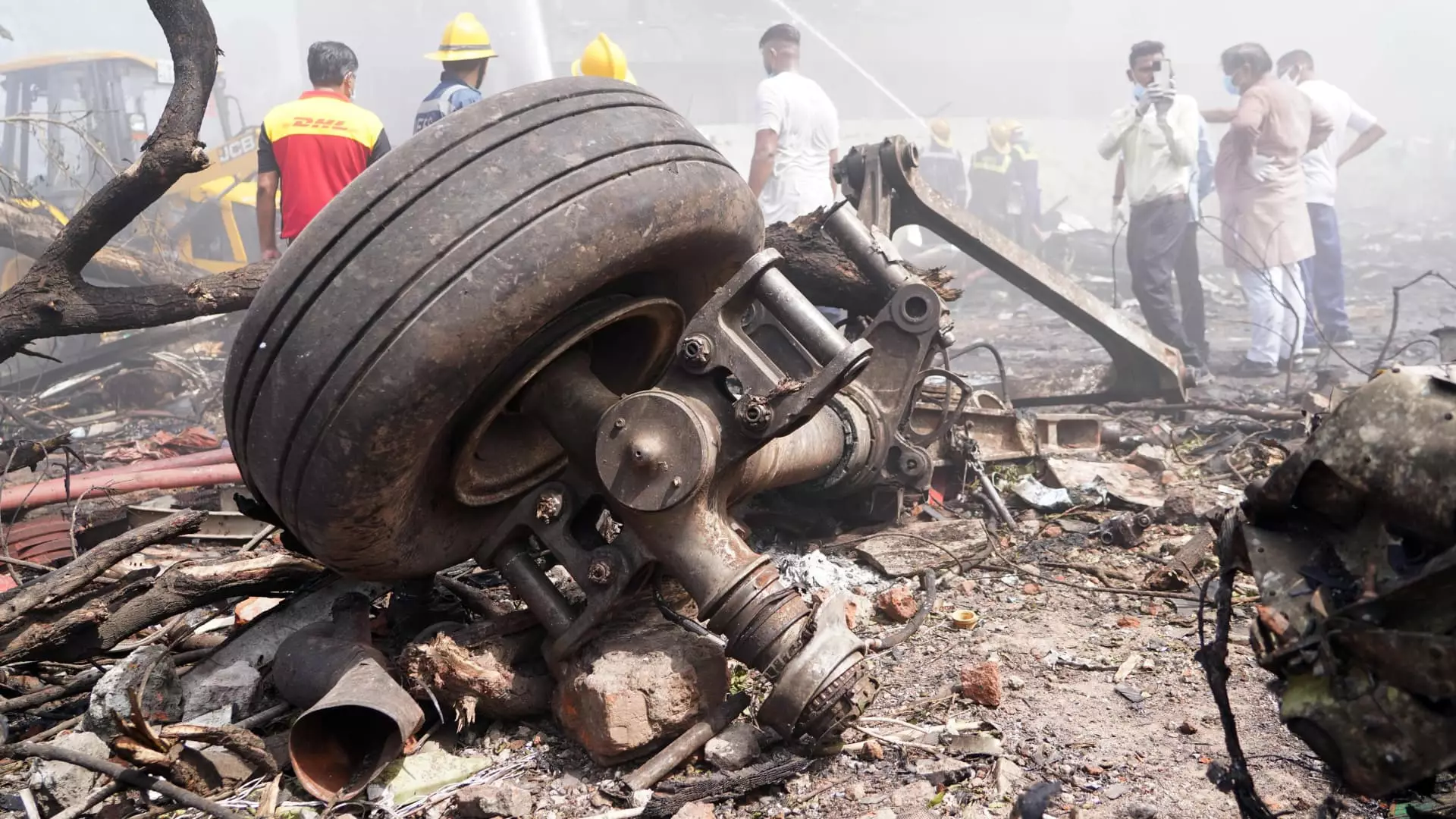The recent tragedy involving an Air India Boeing 787-8 Dreamliner that crashed mere seconds after takeoff has sent shockwaves through the aviation industry and the global community. With 242 lives on board and only one survivor, this disaster stands as a stark reminder of the fragility of air travel. The plane, which had become emblematic of modern aviation’s promise, met its tragic fate on a seemingly routine flight from Ahmedabad to London. The events that unfolded represent not just a calamitous failure but also the need for critical introspection within the aviation sector, particularly regarding safety practices and systemic oversight.
Initially celebrated for its fuel efficiency and innovative technology, the Dreamliner has come under scrutiny following this disastrous event. The crash marks a significant milestone, albeit a morbid one, as the first of its kind for Boeing’s flagship jet since it entered service a decade ago. Watching a state-of-the-art airplane descend into chaos in front of the eyes of its passengers and crew raises fundamental questions about Boeing’s commitment to safety—questions that echo back to past crashes and the company’s troubled history with the 737 Max.
The Investigation Web: Complexity vs. Clarity
In the aftermath of this harrowing event, the investigation is expected to be a labyrinthine process. With multiple factors ranging from mechanical failure to pilot error potentially at play, the truth may be obscured amidst a haze of technical jargon and bureaucratic red tape. The plane lost altitude mere seconds after takeoff, only four seconds into its ascent, raising alarms about what on earth could have gone wrong in such a tightly controlled environment.
Experts like retired air safety investigator Jeff Guzzetti insist that systemic failures rather than manufacturing flaws might be to blame. It’s troubling to witness seasoned individuals dismissing manufacturing culpability, particularly when the company has a history of cutting corners, as highlighted by whistleblower accusations. This bleeds into a larger conversation about accountability—how do we ensure that the pain of tragedy catalyzes genuine reform instead of temporary fixes glossed over with corporate platitudes?
Video footage, maintenance records, and black box data will all be scrutinized, but the need for candid discussion on the consequences of prioritizing profit over safety cannot be overlooked. The industry demands a comprehensive overhaul of auditing practices, one that actively invites criticism from a variety of stakeholders, including those most affected—the passengers.
Boeing’s Dark Past: Lessons Yet to be Learned
The scrutiny Boeing faces today is hardly unique. This latest calamity is unfolding on the backdrop of a troubling narrative that has enveloped the aerospace giant: issues surrounding manufacturing safety, regulatory compliance, and ethical accountability. The 737 Max crisis, which resulted in two fatal crashes, effectively dismantled the trust that both the public and regulatory agencies had in the company. In this context, the adversity Boeing now faces feels like history repeating itself, creating a visceral challenge to its reputation and operational integrity.
CEO Kelly Ortberg has floated the idea that the company is undergoing its “turnaround,” a term that feels eerily naive even in the face of somber headlines. While he is right to seek a robust recovery strategy, claims of moving past previous crises fail to acknowledge the layered complexities that continue to plague Boeing’s operations. An accountability culture needs to be nurtured, one that values transparency over complacency. This incident could be the ultimate wake-up call to ensure that more lives are not placed at risk due to corporate negligence.
The Broader Implications: More Than Just an Airline
Boeing’s saga is more than a mere tale of corporate missteps; it resonates far beyond the airline industry. It serves as a warning to other sectors as well, highlighting the dangers of complacency—the idea that past successes can lend strength to present operations without rigorous continual evaluation. When human lives become collateral damage in a battle for market share, ethical boundaries are blurred, and the stakes are immeasurable.
As investigations drudge on and more details surface, there lies a crucial moment for reflection across the aviation community. Advocating for a shift in how safety protocols are instituted and enforced could redefine what it means to fly with confidence. Safety must always overshadow fiscal prudence; too much is riding on that assumption. Until then, the aviation world teeters precariously between progress and peril, all underscored by the shadow of human tragedy that unfolded in the skies above Ahmedabad.

